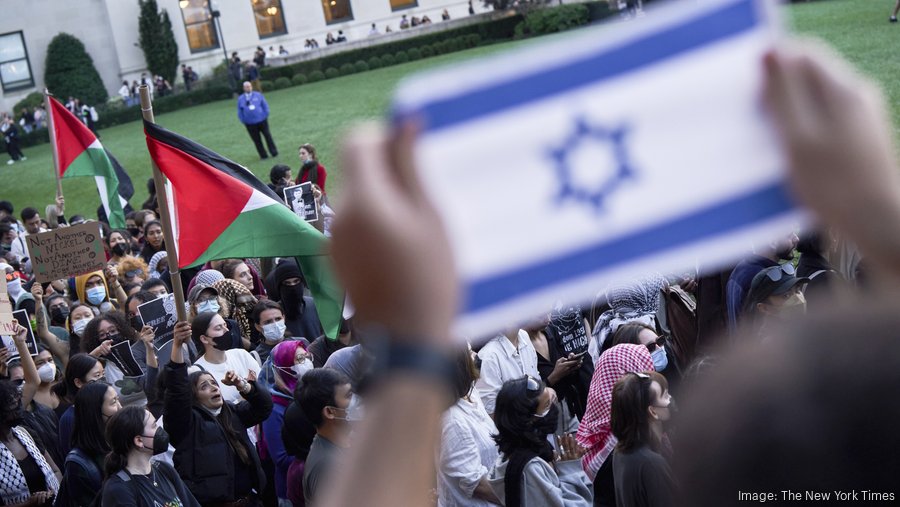Article published in the Philadelphia Business Journal on November 1, 2023.
University presidents walk a tightrope these days. Segments of the university’s constituents may hold strongly opposing views on issues that have been magnified by events during the past month.
The fallout from Hamas’ surprise missile attack and ground incursion of Israel on Oct. 7 and Israel’s retaliation continues to grow. Jewish students on U.S. college campuses have been the target of this fallout.
Jewish students at Cornell University, specifically Cornell’s Center for Jewish Learning, were threatened by online antisemitic posts. In an interview, when asked about her reaction to antisemitic activity on Cornell’s campus, Molly Goldstein, co-president for the Center of Jewish Living said, “Our initial reaction was absolute fear. When posts start coming up on my phone about how people want to kill me and want to bomb my home and our home as a Jewish community, it’s terrifying. … We want to be safe.”
At Cooper Union, Jewish students report they were terrified as they took refuge in the school’s library as a crowd of pro-Palestinian demonstrators advanced on the building. One student, who remained anonymous for her own safety, stated, “When they started banging on the door, my heart started pounding. I was crying. I think if the doors weren’t locked, I don’t know what would have happened. … I was absolutely terrified in that moment.”
One individual who was charged with protecting Cooper Union students had a different view than the students who felt threatened. A police spokesman stated, “There was no direct threat … to the students in the library. [The protestors] were banging on the doors of the library and banging on some transparent windows.” I wonder if the police spokesman’s son or daughter had taken refuge in the library, whether they would have had the same insensitive view.

Tensions between Jewish students and students who support the Palestinians are also running high on campuses at Columbia, Harvard, University of Arizona-Tucson, University of California-Los Angeles and Georgetown, among others.
An assistant professor at the University of California-Davis is suspected of posting on X (formerly Twitter) a threatening message. The individual’s screen shot said, “One group of [people] we have easy access to in the U.S. is all these Zionist journalists who spread propaganda and misinformation. They have houses with addresses, kids in school. The can fear their bosses, but they should fear us more.”
UC Davis Chancellor Gary S. May stated, “Some have asked why this faculty member continues to be employed at UC Davis. The University of California system has specific procedures for the review of complaints of faculty misconduct consistent with university-wide policies and bylaws.”
In the wake of antisemitic incidents on college campuses, 16 senators sent a letter to U.S. Secretary of Education Miguel Cardona outlining numerous campus antisemitic incidents. The letter stated, “We write to urgently understand what the Department of Education is doing to enforce Title VI of the Civil Rights Act of 1964 and ensure Jewish or Israeli college and university students are not subjected to discrimination based on race, color or national origin.”
It is well documented that hate speech encourages violence. This raises the question: Do academic freedom and free speech, the bedrock of higher education, have limits when speech results in threats or violence against any individual or group?
Academia has a long history of protecting academic freedom and free speech. Faculty and students must be permitted to express their views. What must not be tolerated is threats and hate speech that encourages violence against a person or group.
All forms of hate or violence, regardless to whom it is directed, must be condemned by university presidents. They must also defuse and de-escalate tensions on campus. The best way to accomplish this is through dialogue that acknowledges and respects the views of all parties.
If a student or faculty member violates the university code of conduct, that individual should be dealt with according to established policies and procedures. If a hate crime is committed, that’s a matter for law enforcement.
When any group of students feels unsafe on campus, it is the responsibility of the university administration to protect them regardless of their race, nationality, religion or sexual orientation. Let’s hope all university administrators fulfill this responsibility.
Stan Silverman is founder of Silverman Leadership and author of “Be Different! The Key to Business and Career Success.” He is also a speaker, advisor and widely read nationally syndicated columnist on leadership. He can be reached at stan@silvermanleadership.com.

